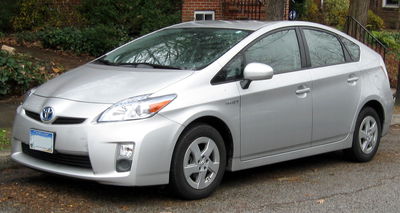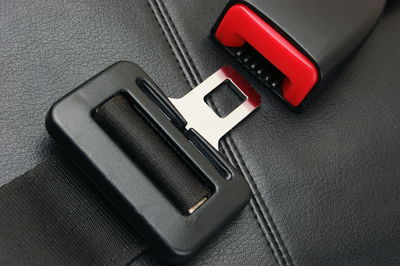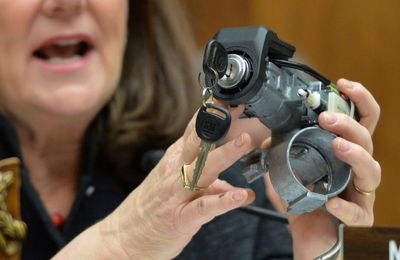6 Of The Most Shocking Automotive Scandals Ever

Volkswagen is making headlines right now for all the wrong reasons after it was caught using a special device that masks the polluting effects of some of its diesel cars - in some cases the cars were producing 40 times more than the accepted limit. It’s an epic scandal, but the automotive industry is far from a stranger to this kind of story.
Here are some of the most shocking scandals to ever hit the car world:
1. Toyota and Lexus suffer unintended acceleration

In 2007, the National Highway Traffic Safety Administration (NHTSA) opened a defect investigation into the Lexus ES350, after it was reported that certain floor mats could entrap the accelerator pedal and cause unintended acceleration. Despite acknowledging the issue internally the same year, Toyota didn’t share its findings. It recalled 55,00 mats, but no vehicles.
Instead, it issued an internal fitment guideline that should’ve given the pedal good clearance, but continued to produce the mats to the same specification. The result was that if a dealer didn’t follow the new fitment guidelines, the mats could still pin the accelerator down. This was the case in August 2009, when a Californian family of four was killed in a crash after their Lexus ES350’s mat trapped the accelerator.
While all of this was going on, Toyota was trying to play down the fact that a faulty piece of plastic in its pedals could also cause the accelerator to stick. In late 2009, Toyota could hide from the issues no more, and ultimately recalled 9.3 million cars worldwide to fix the problems.
2. Takata's brittle seatbelts

Takata is no stranger to controversy. The Japanese company has been at the centre of two massive scandals in its history. The first began in 1995, after a number of Honda drivers complained that their seatbelts wouldn’t latch properly, would release in the event of a crash, or even more terrifying, would become jammed after a crash, trapping the occupant in place.
Although some manufacturers passed the problem off as the result of misuse by users rather than an inherent design fault, it was eventually discovered that when exposed to sunlight over a long period of time, the plastic in the seatbelt buckle would go brittle. This would cause it to either fail, causing the belt to break loose, or parts would break off and jam the belt in place.
3. Takata's defective airbags

Takata’s second scandal hit in 2013, when it was revealed that airbags made at Takata’s Mexican factory could malfunction, causing debris to be launched into the cabin when deployed. When the airbag deploys, Takata uses ammonium nitrate to create a small explosion, quickly inflating the airbag. An investigation discovered that moisture was making its way into the airbag and reacting with the explosive chemical, causing a larger explosion that ruptured the metal canister that holds it, sending shrapnel towards the passengers.
There are a number of confirmed deaths related to this issue - Honda itself has discovered eight deaths in its cars caused by airbag shrapnel - and resulted in the biggest automotive recall in history; at present as many as 34 million vehicles could be eligible for a recall.
4. Chevrolet's reluctant engine mount recall

It should be a surprise to absolutely nobody that this story involves a scumbag GM. In 1969, the National Highway Traffic Safety Administration (NHTSA) contacted GM as it had received reports of engine mount failures that caused a catastrophic chain of events that could quite easily turn deadly.
In simple terms, the engine could break free from its mounts. The engine could damage the throttle body linkage causing unintended acceleration, and could twist the automatic transmission, which would stop the driver being able to find ‘park.’
Incredibly, GM was already aware of the issue, but had kept it to itself, telling the NHTSA that it had already received “172 reports of failed motor mounts, with 63 accidents and 18 injuries.” The NHTSA clearly decided that was acceptable, and in 1970 placed the investigation on an ‘inactive status,’ meaning it wouldn’t be chasing it up.
Eventually the media picked up on what was going on, and justifiably kicked up a stink. In December 1971, GM announced it would recall 6.5 million vehicles because of all the negative media that surrounded the issue. Clearly, the human beings who had been injured as a result of the issue weren’t deemed important enough to motivate a recall.
Source: AutoSafety
5. GM's ignition coverup

Here’s another one from GM, and again, another fault that it was aware of. The issue related to a faulty ignition switch that could turn the car off at speed, disabling safety features such as the airbags and anti-lock brakes.
Again, a risk assessment decided that paying injured people off would be more cost effective than paying to fix the part. That might’ve worked out from a business perspective if the defect hadn’t been so deadly. So far, GM has approved compensation for 90 deaths and 163 injuries as a result of the fault, and eventually an attorney for a woman killed as a result of the defect uncovered the truth.
Eventually GM issued a recall, and agreed to pay a $35m fine to the Department of Transport for the delays in issuing a recall.
This whole ‘dieselgate’ affair isn’t the first time VW has courted controversy, either. Last year, researchers discovered that an immobiliser used by 26 manufacturers including Audi, Fiat, Honda, Ferrari, Porsche and Volkswagen, offered very little protection from outside inteference.
The researchers looked into the issue after police issued a statement saying that a number of cars were being stolen from people’s driveways without the key and they had no idea how. When VW discovered that the researchers had figured out how thieves were stealing its cars, it took legal action to supress the findings, claiming it would encourage more thefts.
After a year of negotiations, the paper was published, with just one sentence removed. The immobilisers required a code from the key fob that informed the car the correct key was being used, however the researchers discovered that it used very basic encryption. Thieves only had to tap into the key fob’s signal and ‘listen’ twice to find the recurring code. A basic computer programme could then replicate the code and turn on the engine.
Despite the fact the number of vehicle thefts has dropped dramatically in recent years, largely thanks to these complicated electronic systems, these numbers hide a dramatic spike in ‘keyless entry’ thefts.
The electronic key fob thefts also point to another potential scandal ahead. Researchers in America recently managed to gain access to a Jeep from the comfort of their sofa, and could override all electrical systems, easily switching off the engine while the car was moving.
As electrical systems become more complicated, car manufacturers must be more and more switched on to the potential security flaws that can be exploited by clever people with computers. The future is exciting, but manufacturers still have a responsibility to keep us safe.














Comments
No comments found.